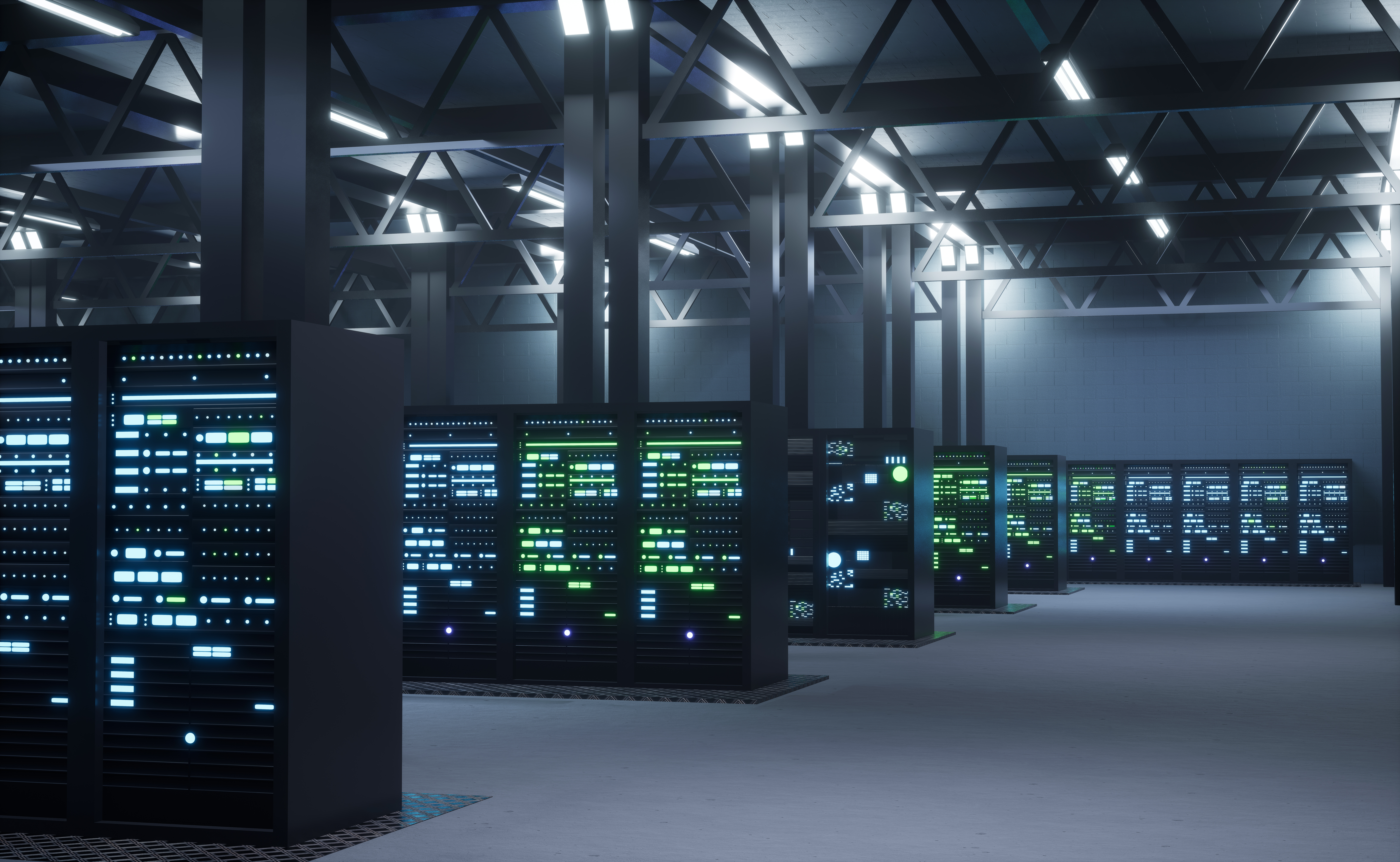
Why use nBalance ?
As technology advances and online businesses thrive, maintaining optimal server efficiency and safeguarding against endpoint security threats have become crucial. This is where load balancers, such as nBalance, play a pivotal role. By evenly distributing network traffic and implementing various security measures, load balancers ensure smooth server operation and protect sensitive data. Let's explore why incorporating a load balancer is essential for enhancing server efficiency and preventing security breaches.

Enhancing Server Performance
When it comes to optimizing server performance, nBalance plays a crucial role. By distributing incoming network traffic across multiple servers, nBalance ensures that each server operates at an optimal capacity, resulting in improved server efficiency and reduced response times.
nBalance works by intelligently routing traffic to different servers based on their current capacity, preventing any single server from becoming overloaded. This distribution of traffic allows organizations to handle high traffic loads without compromising server performance.
nBalance brings several benefits to server performance:
- Improved Server Capacity: By evenly distributing traffic nBalance helps maximize server capacity utilization. This ensures that each server is utilized to its full potential, reducing the risk of bottlenecks and server failures.
- Efficient Resource Utilization: Load balancing optimizes resource usage by evenly distributing workloads across available servers. This prevents any single server from being overloaded, allowing for efficient utilization of hardware resources.
- Handles High Traffic Loads: nBalance enables organizations to handle high volumes of incoming network traffic without experiencing performance degradation. By evenly distributing traffic, load balancing ensures smooth and uninterrupted service delivery.
- Reduces Downtime:In the event of a server failure, nBalance automatically redirects traffic to other healthy servers, minimizing downtime and ensuring high availability.
| Without nBalance | With nBalance |
|---|---|
| Incoming traffic unevenly distributed across the server | Incoming traffic evenly distributed across servers |
| Suboptimal server utilization | Maximizes server utilization |
| Risk of overload on some servers | Prevents overload on any single server |
| SSL OffLoading done at server | SSL OffLoading done at LoadBalancer. |
| Cookie will be handled by server | Cookie will be handled by LoadBalancer. |
| No location based traffic routing | Location based traffic routing. |
| No traffic control | Country based traffic control |
As shown in the table, without a nBalance, all incoming traffic is directed to a single server, potentially causing overload and poor performance. However, with a nBalance, traffic is evenly distributed among multiple servers, ensuring optimal performance and efficient resource utilization.
By utilizing load balancing and implementing a robust load balancer solution like nBalance, organizations can enhance server performance, optimize resource utilization, and provide a seamless experience to their users.

Achieving Scalability and High Availability
nBalance plays a crucial role in achieving server scalability and high availability. By evenly distributing incoming network traffic across multiple servers, load balancing enables easy scaling of server resources, ensuring smooth operations even during high traffic loads. A well-implemented load balancer provides fault tolerance, minimizing downtime and providing uninterrupted service to users.
Server scalability is crucial for accommodating increasing user demand. As businesses grow, the number of concurrent users accessing the server rises, which can strain server resources and hamper performance. nBalance addresses this challenge by efficiently and effectively distributing traffic across multiple servers, ensuring an even workload distribution and preventing any single server from becoming overwhelmed.
High availability is essential for businesses in today's digital landscape, as downtime can lead to significant financial losses and damage to brand reputation. nBalance is crucial in ensuring high availability by continuously monitoring server status and automatically redirecting traffic in the event of a server failure. By quickly detecting failures and rerouting traffic to healthy servers, nBalance helps maintain uninterrupted service and provides a seamless user experience.
Load Balancers and Security Threat Mitigation
In today's rapidly evolving digital environment, endpoint security and threat prevention have become paramount for businesses across all sectors. As cyber threats grow more sophisticated, companies must adopt comprehensive security strategies to protect their networks and sensitive information. nBalance plays a pivotal role in addressing these concerns, particularly those targeting endpoints. By efficiently distributing network traffic across multiple servers, nBalance minimizes the impact of attacks on individual endpoints, ensuring that no single server is overwhelmed or becomes a point of vulnerability.
One of the key threats that nBalance helps mitigate is Distributed Denial of Service (DDoS) attacks, which aim to inundate servers with excessive traffic, making them inaccessible to legitimate users. By intelligently routing traffic and adjusting server capacity, nBalance helps to prevent server overloads and reduces the effectiveness of such attacks. Additionally, nBalance provides crucial security measures like SSL termination, enabling the decryption, inspection, and re-encryption of traffic. This ensures secure communication between clients and servers while identifying potential threats hidden within encrypted traffic.
Preventing Common Security Vulnerabilities:nBalance acts as a shield against common security vulnerabilities, offering protection against malicious attacks such as cross-site scripting (XSS) and SQL injection. By intelligently distributing traffic patterns and implementing security measures at the network and application layers, nBalance helps detect and prevent these vulnerabilities from being exploited.
Security Threat Mitigation with DDoS Protection :DDoS attacks can cripple networks and cause significant downtime for businesses. nBalance with built-in DDoS protection capabilities can intelligently detect and mitigate these attacks by using various techniques like rate limiting, connection tracking, and traffic pattern analysis. This proactive approach ensures the stability and availability of endpoints even under heavy attack.
The Importance of SSL Termination :With the increasing importance of data privacy and the widespread use of encryption protocols, nBalance is equipped with SSL termination capabilities. SSL termination enables nBalance to offload the computationally intensive task of decrypting SSL-encrypted traffic from servers, reducing the strain on resources while maintaining secure communication between clients and servers.
In conclusion, nBalance plays a crucial role in ensuring endpoint security and preventing cyber threats. By distributing traffic, identifying potential vulnerabilities, and providing DDoS protection and SSL termination, load balancers help organizations maintain a secure online environment, safeguard sensitive data, and ensure uninterrupted service for their users.

SSL Termination and Protecting Data Privacy
In today's interconnected world, data privacy is a top priority for businesses and individuals, and SSL termination plays a critical role in ensuring secure data transmission. By offloading SSL processing from individual servers to a load balancer like nBalance, the system handles encryption and decryption tasks, allowing for secure communication between clients and servers. This process not only guarantees data privacy but also relieves servers from resource-intensive SSL tasks, allowing them to focus on core operations such as application logic and data processing. Additionally, nBalance centralizes SSL certificate management, simplifying updates and ensuring consistent encryption protocols across the entire infrastructure.
Beyond encryption, nBalance enhances security by enforcing SSL/TLS protocols and acting as a firewall, inspecting SSL traffic to detect and prevent potential threats, including DDoS attacks. By combining data encryption, secure transmission, and advanced security measures, nBalance strengthens data protection and improves server performance, ensuring the privacy and integrity of sensitive information.
High availabilityis essential for businesses in today's digital landscape, as downtime can lead to significant financial losses and damage to brand reputation. nBalance is crucial in ensuring high availability by continuously monitoring server status and automatically redirecting traffic in the event of a server failure. By quickly detecting failures and rerouting traffic to healthy servers, nBalance helps maintain uninterrupted service and provides a seamless user experience.
Optimizing Performance with Content Caching
nBalance offers a powerful solution for optimizing server performance through the effective utilization of content caching. By caching frequently accessed content at various server locations, load balancers significantly improve server response time, reduce server load, and ultimately enhance the user experience.
Content caching involves storing and retrieving static or dynamic content from a temporary storage location to fulfill user requests more efficiently. When a user requests a particular piece of content, the load balancer checks if it already exists in the cache, if it does, the content is served directly from the cache instead of fetching it from the origin server. This process eliminates the need for repetitive requests to the origin server, resulting in faster response times.
By leveraging content caching, load balancers effectively distribute the load among multiple servers while minimizing the strain on individual servers. This helps prevent server overload and optimize the utilization of server resources. As a result, server response time is significantly improved, ensuring a smooth and responsive user experience.

nBalance Deployment Strategies
Hardware load balancers are physical devices that are dedicated solely to load-balancing network traffic. They are typically deployed on-premises within a company's data center. Hardware load balancers offer several advantages:
- High Performance: Hardware load balancers are built with specialized hardware components optimized for handling high-traffic loads, resulting in superior performance.
- Scalability: These devices can handle significant increases in network traffic and support the growth of an organization's server infrastructure.
- Reliability : nBalance enables organizations to handle high volumes of incoming network traffic without experiencing performance degradation. By evenly distributing traffic, load balancing ensures smooth and uninterrupted service delivery.Hardware load balancers are designed to provide high availability and fault tolerance, minimizing downtime and ensuring uninterrupted service.
However, there are also considerations to keep in mind when deploying hardware load balancers. They often require upfront investment in purchasing and maintaining the physical devices. Additionally, hardware load balancers may lack the flexibility and scalability offered by software and cloud-based alternatives.
Software load balancers, also known as application load balancers, are implemented using software solutions that run on standard hardware or virtual machines. They offer several advantages:
- Flexibility:Software load balancers can be deployed on a variety of hardware platforms, making them suitable for both on-premises and cloud environments
- Scalability:They can easily scale up or down based on the changing demands of network traffic.
- Cost-Effective: Software load balancers often have lower upfront costs compared to hardware load balancers, as they utilize existing infrastructure.
Ensuring Unaffected Status
Cloud-based load balancers are a relatively new trend in load balancer deployment. These load balancers are offered as a service by cloud providers and are accessible through the Internet. Here are the advantages of using cloud-based load balancers:
- Ease of Deployment:Cloud-based load balancers can be quickly provisioned and configured, allowing businesses to scale their infrastructure rapidly.
- Management and Maintenance:Cloud providers handle the management and maintenance of load balancer infrastructure, reducing the burden on IT teams.
- Global Availability: : Cloud-based load balancers have global points of presence, ensuring optimal performance for users worldwide.
However, businesses considering cloud-based load balancers should carefully assess their requirements, as reliance on a third-party provider for critical infrastructure introduces dependencies and potential risks.
